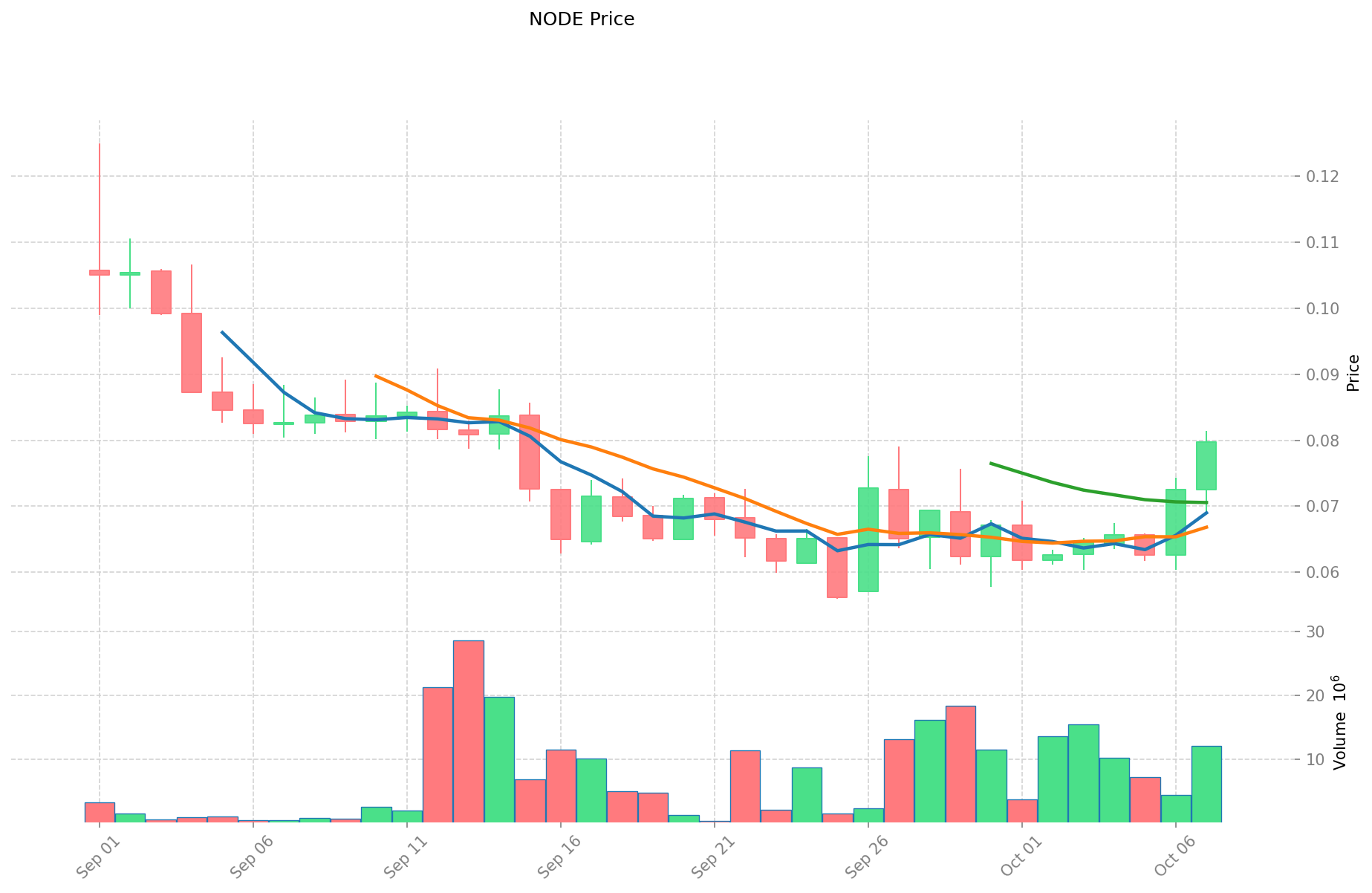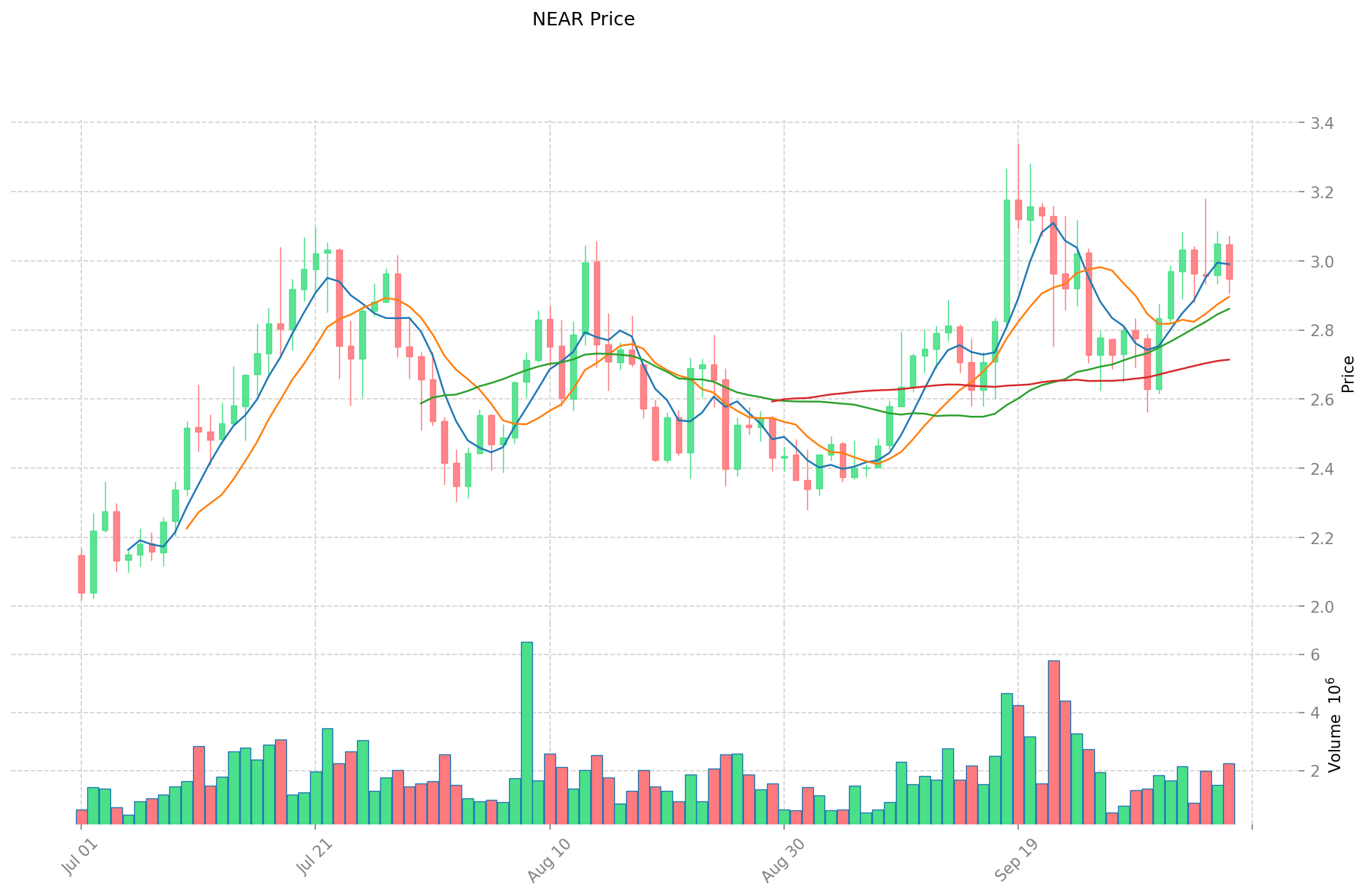NODE vs NEAR: Exploring the Key Differences in Blockchain Protocols for DApp Development
Introduction: Investment Comparison between NODE and NEAR
In the cryptocurrency market, the comparison between NodeOps (NODE) vs Near (NEAR) remains a topic of interest for investors. The two not only differ significantly in market cap ranking, application scenarios, and price performance, but also represent different positioning in the crypto asset space.
NodeOps (NODE): Launched recently, it has gained market recognition for its verifiable compute solutions and developer-friendly platform.
Near (NEAR): Introduced in 2020, it has been hailed as a highly scalable protocol supporting fast DApp operations on mobile devices.
This article will comprehensively analyze the investment value comparison between NODE vs NEAR, focusing on historical price trends, supply mechanisms, institutional adoption, technological ecosystems, and future predictions, attempting to answer the question investors care about most:
"Which is the better buy right now?"
I. Price History Comparison and Current Market Status
NodeOps (NODE) and NEAR Protocol (NEAR) Historical Price Trends
- 2025: NODE experienced significant price volatility due to its recent launch and market speculation.
- 2025: NEAR's price declined by approximately 40% over the past year, reflecting broader market trends.
- Comparative analysis: In the current market cycle, NODE has shown higher volatility with recent gains, while NEAR has demonstrated a more established but declining trend.
Current Market Situation (2025-10-08)
- NODE current price: $0.0799
- NEAR current price: $2.96
- 24-hour trading volume: NODE $910,347 vs NEAR $6,730,415
- Market Sentiment Index (Fear & Greed Index): 60 (Greed)
Click to view real-time prices:
- Check NODE current price Market Price
- Check NEAR current price Market Price


II. Core Factors Affecting NODE vs NEAR Investment Value
Technological Foundation
- NEAR: Core technology is Nightshade sharding, which distributes transaction processing across numerous validation nodes, allowing each node to process only a small portion of network transactions, significantly enhancing efficiency
- NODE: Based on NEAR's technology, leveraging the same sharding approach to achieve scalability
Scalability and Performance
- NEAR: Layer 1 blockchain with Layer 2-like efficiency through its sharding mechanism
- NODE: Benefits from the same technical architecture while potentially offering specialized optimizations
Market Adoption and Use Cases
- NEAR: Growing adoption in decentralized applications ecosystem
- NODE: Emerging opportunities in specific market niches leveraging NEAR's infrastructure
Economic Model Sustainability
- Both tokens rely on efficient transaction processing to maintain value
- Long-term viability depends on network growth and increased transaction volume
Technology Development Roadmap
- NEAR: Continued enhancement of the Nightshade sharding technology
- NODE: Development focus on specialized applications within the ecosystem
Investment Market Positioning
- NEAR: Established as an efficient Layer 1 solution competing with other major blockchains
- NODE: Positioned as a specialized component within the broader NEAR ecosystem
III. 2025-2030 Price Prediction: NODE vs NEAR
Short-term Prediction (2025)
- NODE: Conservative $0.0485-$0.0795 | Optimistic $0.0795-$0.1145
- NEAR: Conservative $2.77-$2.95 | Optimistic $2.95-$3.15
Mid-term Prediction (2027)
- NODE may enter a growth phase, with an estimated price range of $0.0574-$0.1118
- NEAR may enter a steady growth phase, with an estimated price range of $2.99-$3.47
- Key drivers: Institutional capital inflow, ETF, ecosystem development
Long-term Prediction (2030)
- NODE: Base scenario $0.0827-$0.1379 | Optimistic scenario $0.1379-$0.1889
- NEAR: Base scenario $1.87-$3.60 | Optimistic scenario $3.60-$4.68
Disclaimer: This analysis is based on historical data and market trends. Cryptocurrency markets are highly volatile and unpredictable. This information should not be considered as financial advice. Always conduct your own research before making investment decisions.
NODE:
| 年份 | 预测最高价 | 预测平均价格 | 预测最低价 | 涨跌幅 |
|---|---|---|---|---|
| 2025 | 0.1145376 | 0.07954 | 0.0485194 | 0 |
| 2026 | 0.100920352 | 0.0970388 | 0.086364532 | 21 |
| 2027 | 0.11184692088 | 0.098979576 | 0.05740815408 | 23 |
| 2028 | 0.147578547816 | 0.10541324844 | 0.0853847312364 | 31 |
| 2029 | 0.14926515979104 | 0.126495898128 | 0.07083770295168 | 58 |
| 2030 | 0.188896324674542 | 0.13788052895952 | 0.082728317375712 | 72 |
NEAR:
| 年份 | 预测最高价 | 预测平均价格 | 预测最低价 | 涨跌幅 |
|---|---|---|---|---|
| 2025 | 3.15115 | 2.945 | 2.7683 | 0 |
| 2026 | 3.44432475 | 3.048075 | 2.316537 | 2 |
| 2027 | 3.47343386625 | 3.246199875 | 2.986503885 | 9 |
| 2028 | 3.628602220275 | 3.359816870625 | 3.05743335226875 | 13 |
| 2029 | 3.703862118177 | 3.49420954545 | 3.2496148772685 | 17 |
| 2030 | 4.67874658135755 | 3.5990358318135 | 1.87149863254302 | 21 |
IV. Investment Strategy Comparison: NODE vs NEAR
Long-term vs Short-term Investment Strategies
- NODE: Suitable for investors focused on emerging technologies and niche market opportunities
- NEAR: Suitable for investors seeking established platforms with broader ecosystem potential
Risk Management and Asset Allocation
- Conservative investors: NODE: 20% vs NEAR: 80%
- Aggressive investors: NODE: 40% vs NEAR: 60%
- Hedging tools: Stablecoin allocation, options, cross-currency portfolios
V. Potential Risk Comparison
Market Risk
- NODE: Higher volatility due to recent launch and market speculation
- NEAR: Exposure to broader market trends and competition from other Layer 1 solutions
Technical Risk
- NODE: Scalability, network stability, potential vulnerabilities in specialized applications
- NEAR: Sharding implementation challenges, security vulnerabilities
Regulatory Risk
- Global regulatory policies may impact both, with potentially greater scrutiny on newer projects like NODE
VI. Conclusion: Which Is the Better Buy?
📌 Investment Value Summary:
- NODE advantages: Potential for rapid growth, specialized use cases within NEAR ecosystem
- NEAR advantages: Established platform, broader ecosystem, proven technology
✅ Investment Advice:
- New investors: Consider a smaller allocation to NODE within a diversified portfolio primarily consisting of established assets like NEAR
- Experienced investors: Balanced approach with higher risk tolerance for NODE's potential growth
- Institutional investors: Strategic allocation to both, with emphasis on NEAR for stability and NODE for potential high-growth opportunities
⚠️ Risk Warning: The cryptocurrency market is highly volatile. This article does not constitute investment advice. None
VII. FAQ
Q1: What are the main differences between NODE and NEAR? A: NODE is a newer project built on NEAR's infrastructure, focusing on specialized applications, while NEAR is an established Layer 1 blockchain known for its scalability through Nightshade sharding technology.
Q2: Which token has shown better price performance recently? A: NODE has shown higher volatility with recent gains due to its newer status, while NEAR has demonstrated a more established but declining trend over the past year.
Q3: How do the long-term price predictions compare for NODE and NEAR? A: By 2030, NODE is predicted to reach $0.0827-$0.1889, while NEAR is forecasted to reach $1.87-$4.68, according to base and optimistic scenarios.
Q4: What are the main risk factors for investing in NODE and NEAR? A: NODE faces higher volatility and market speculation risks, while NEAR is exposed to broader market trends and competition from other Layer 1 solutions. Both face technical and regulatory risks.
Q5: How should investors allocate their portfolio between NODE and NEAR? A: Conservative investors might consider 20% NODE and 80% NEAR, while more aggressive investors could opt for 40% NODE and 60% NEAR, depending on risk tolerance and investment goals.
Q6: Which token is better suited for long-term vs short-term investment strategies? A: NODE may be more suitable for investors focused on emerging technologies and niche market opportunities, potentially offering higher short-term gains. NEAR is better suited for those seeking established platforms with broader ecosystem potential for long-term growth.
Q7: What factors could drive the future growth of NODE and NEAR? A: Key drivers for both tokens include institutional capital inflow, potential ETF developments, and ecosystem growth. NODE's growth may be further influenced by its specialized applications, while NEAR's growth depends on continued adoption of its scalable blockchain infrastructure.
Share
Content